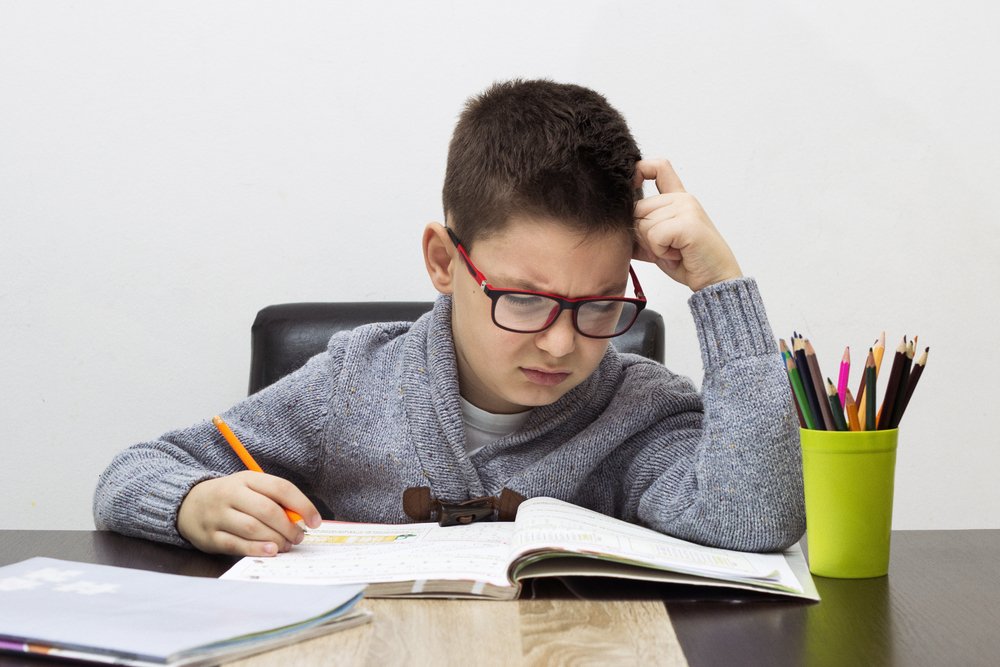CERTAIN MISCONCEPTIONS
o Learning difficulties are not the same as mental retardation, Autism, deafness and blindness.
o These children are not lazy or stupid.
o They do not need pills or diet to cure them.

HOW PREVALENT IS IT IN CHILDREN?
o 18 % of our school going children between the age of 6 – 11 years have Specific or General Learning Difficulties
o 89% Moderate Learning Difficulties
o 24% Severe Learning Difficulties
o 18% Profound Multiple LD
CAUSES OF SLD
No single factor is directly responsible for SLD, but some of the factors are:-
o Organic
o Biological
o Genetic
o Environmental
SYMPTOMS OF SLD
o Problems reading and/or writing
o Problems with math
o Poor memory
o Problems paying attention
o Trouble following directions
o Clumsiness
o Trouble telling time
o Problems staying organized
A child with a learning disability also may have one or more of the following:
o Acting without really thinking about possible outcomes (impulsiveness)
o “Acting out” in school or social situations
o Difficulty staying focused; being easily distracted
o Difficulty saying a word correctly out loud or expressing thoughts
o Problems with school performance from week to week or day to day o Speaking like a younger child; using short, simple phrases; or leaving out words in sentences
o Having a hard time listening
o Problems dealing with changes in schedule or situations
o Problems understanding words or concepts
DIFFERENT KINDS OF LEARNING DIFFICULTIES
o DYSLEXIA -READING DIFFICULTY
o DYSCALCULIA -MATHEMATICAL DIFFICULTY
o DYSGRAPHIA -WRITING DIFFICULTY
o DYSPRAXIA - CO-ORDINATION DIFFICULTY
TYPES OF DYSLEXIA
o Visual Dyslexia
o Auditory Dyslexia
CHARACTERISTICS OF VISUAL DYSLEXIA
o Reversal problems - Child twists symbols when reading letters; parts of the words or whole words may be reversed.
o Inversion tendencies – Child would write 6 instead of 9.
o Difficulty in visual discrimination.
RED FLAGS OF AUDITORY DYSLEXIA
o Poor auditory discrimination memory or sequencing.
o Persistent spelling difficulties.
o Poor long term memory for comprehending complete information.
o Difficulty in concept learning – If a new concept is introduced just orally, the child would find it very difficult to understand. He would require visual images to understand the same.
CLASSROOM ACCOMMODATIONS TO HELP STUDENTS WITH DYSLEXIA
o Provide extra time on all assignments and a quiet place to work/test if needed.
o Reduce the amount of words on a spelling list. o Provide various ways for a student to demonstrate his/her understanding (oral testing, video projects, etc).
o Do not ask the student to read aloud in class.
o Break assignments into smaller tasks.
o Reduce clutter or unnecessary objects on worksheets and homework.
o Provide, in advance, an outline of class lectures, a copy of class notes, organizers, and/or study guides.
o Avoid penalizing a student for spelling or provide a separate grade for content and one for spelling.
o Use oral directions or simplified written directions.
o Reduce paper and pencil tasks.
DYSCALCULIA – MATHEMATICAL DIFFICULTY
TYPES OF DYSCALCULIA
Computational Difficulty
o Poor addition, subtraction, multiplication and division.
o Failure in application of math rules.
Conceptual Difficulty
o Poor understanding of questions. o Difficulty in discriminating between the relevant and irrelevant aspects of math problems.
o Poor discrimination between different shapes, sizes and quantities.
o Poor number sense.
o Poor understanding of positions.
o Poor understanding of the fact that objects do not change themselves by keeping them far or near.
COMMON SIGNS OF DYSCALCULIA
o Delayed development of counting abilities
o Less understanding of basic counting mechanisms compared to children of the same age
o Delay in comprehending and applying the strategies for addition, subtraction, multiplication and division
o Difficulties in the retention of numerical facts and arithmetic symbols
o Problems in the automatic processing of numbers and symbols
o Issues in the management of a mental number line
o Slowness and frequent errors in finger counting
o Difficulty decomposing slightly bigger numbers
o Delayed understanding of place value
o A general aversion or a negative attitude towards Maths
o Troubles executing multi-step calculation processes
o Trouble identifying numbers
o Poor coordination and concentration
o Problem reading analogue clocks
o Difficulty comparing two numbers
o Incapability to memorize multiplication tables
o Problems memorizing mathematical rules, sequences and formulae
o Difficulty carrying out very basic financial task such as during transaction with a shopkeeper
DYSGRAPHIA – WRITING DIFFICULTY
o Dysgraphia is a neurological disorder that involves writing. It can involve difficulties with the physical aspects of writing. Example:- Awkward pencil grip or bad handwriting
o Putting thoughts on paper. Example : writing compositions.
o Discriminating left to right and solving problems from left to right.
o Understanding size relationships (big-small, more-less)
o Difficulty in writing date, days of the week, months of the year.
CHARACTERISTICS OF DYSGRAPHIA
o Bad or illegible handwriting.
o Awkward or cramped pencil grip. o Avoidance of tasks that involve writing.
o Difficulty in writing within margins or line spacing and inconsistent spacing between words. o Indiscriminate use of punctuation.
o Confusion in direction of slope.
DYSPRAXIA – CO-ORDINATION DIFFICULTY
CHARACTERISTICS OF DYSPRAXIA
o Co-ordination problems including awkwardness in walk or trouble with skipping, hopping, etc.
o Confusion about which hand to use for which task.
o Cannot hold a pen or pencil properly.
o Poor sense of direction.
o Speech problems, slow to learn to speak or speech maybe incoherent.
o Trouble with reading and writing.
o Phobias or obsessive behaviors.
RED FLAGS OF DYSPRAXIA
Gross Motor
o Getting dressed 
o Physical Issues
o Co-ordination
o Balance
Fine Motor
o Manipulation Difficulties
o Handwriting Issues
o Buttons & Shoe Laces
Communication
o Speech can be immature
o Gets words muddled up
Organizational
o Finds Planning Tricky
o Memory Difficulties
o Rules
o Needs Visual Reminders
o Sequences
Classroom Difficulties
o Manipulation Difficulties
o Handwriting Issues
o Buttons & Shoe Laces
Concentration
o Poor Memory
o Easily Distracted
o Limited Focus
OTHER LEARNING DIFFICULTIES
o Auditory Processing Disorder - APD (Also Known As Central Auditory Processing Disorder.)
o Language Processing Disorder - LPD
o Non Verbal LD
o Executive Function Disorder
AUDITORY PROCESSING DISORDER (APD)
Also Known As Central Auditory Processing Disorder (CAPD)
o Can’t Process What They Hear In The Same Way As The Other Kids Do Because Their Ears And Brain Don’t Fully Coordinate.
o Problem Which Affects 5% Of School Children
o May Be A Result From o Ear Infection o Head Injury o Neuro-developmental Delays
o Poor listening skills
o Frequently misunderstands speech
o Difficulty following oral directions or answering Questions
o Provides inappropriate responses during conversations
o Tendency to confuse similar sounding words
o Easily distracted by noises and difficulty concentrating when background noise is present
o Poor academic functioning in the absence of developmental delays
o History or presence of speech or language delays
o History of ear infection
o Generally, “normal” results on regular hearing tests
LANGUAGE PROCESSING DISORDER (LPD)
o Relates Only To The Processing Of Language.
o Imagine Travelling To A Foreign Country Without Ever Having Learned The Language Spoken There. Same It Is With Kids Having LPD.
o Extreme Difficulty Understanding What You Hear And Expressing What You Want To Say.
o Affects The Area Of The Brain That Controls Language Processing.
NON VERBAL LD
o Has trouble interpreting non verbal cues like facial expressions or body language and may have poor coordination.
o Disorder which is usually characterized by significant discrepancy between higher verbal skills and weaker motor, visual spatial and social skills.
o Different than academic, language and cognitive disabilities
CHARACTERISTICS OF NON VERBAL LD
o Poor Social Perception
o High Verbal Intelligence
o Early Reading Achievement
o More evident in Adolescents and Adults
NON VERBAL LD – SOCIAL PERCEPTION
o Does not understand humour
o Does not notice body language
o Does not ‘hear’ people’s tone of voice
o Does not comprehend facial expression
NON VERBAL LD – RED FLAGS
o Delay in understanding or using spoken language
o Difficulty understanding simple instructions
o Lengthy pauses before naming objects and colours
o Limited awareness or interest in books
o Difficulty colouring and drawing
o Short attention span (won’t sit through one story book)
o Difficulty understanding and following instructions
o Trouble remembering what someone just told them
o Lacking motor coordination when walking, playing sports, holding a
pencil or trying to tie a shoelace
o Frequently losing or misplacing homework, school books or other items
o Unable to understand the concept of time (difference between yesterday, today and tomorrow)
EXECUTIVE FUNCTION DISORDER - EFD
o People with executive function disorder (EFD) struggle to organize and
regulate their behavior in ways that will help them accomplish long-term goals.
o Weaknesses in mental skills o Eg. Losing things, poor planning, misplacing things , disorganized , poor time management etc.
o It is different from ADHD.
o ADHD may lead to EFD.
WEBSITES
https://dsf.net.au/what-are-learning-disabilities/
https://ldaamerica.org/types-of-learning-disabilities/
https://ldaamerica.org/symptoms-of-learning-disabilities/
BOOKS TO READ
o Learning Disabilities: From Identification to Intervention - Book by G. Reid Lyon, Jack M. Fletcher, Lynn Fuchs, and Marcia A. Barnes
o Overcoming Dyslexia - Book by Sally E. Shaywitz
o Teaching students with learning problems - Book by Cecil D. Mercer
 This information is brought to you by Sunderji's Gloabal Academia, Pune, supports children with mixed diabilities, provides remedial education and therapies on one-to-one basis. All rights reserved, do not copy, reprint or reproduce the content without prior permissions. For more details contact us
This information is brought to you by Sunderji's Gloabal Academia, Pune, supports children with mixed diabilities, provides remedial education and therapies on one-to-one basis. All rights reserved, do not copy, reprint or reproduce the content without prior permissions. For more details contact us
